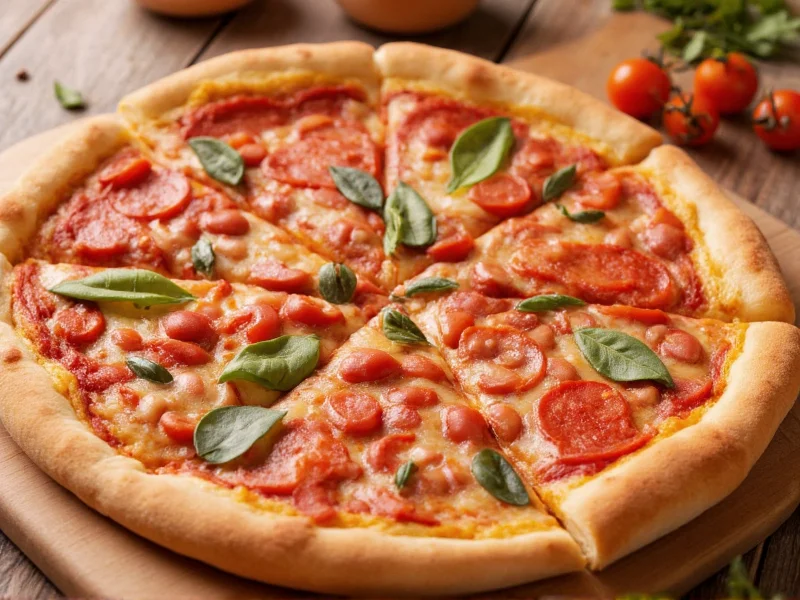Beans are not traditional pizza toppings in authentic Italian cuisine, but they appear in regional variations worldwide. Nutritionally, beans add protein and fiber, making them a viable option for vegetarian pizzas when prepared correctly, though texture and moisture control are critical considerations.
The Curious Case of Beans on Pizza: Tradition Versus Innovation
When considering unconventional pizza toppings, beans present an interesting culinary dilemma. While purists might recoil at the idea, food historians note that pizza itself has evolved dramatically since its Neapolitan origins. The question isn't whether beans can go on pizza—they technically can—but whether they should, and how to execute this combination successfully.Global Pizza Traditions That Feature Beans
Pizza traditions vary significantly across cultures. In Brazil, for instance, frango com catupiry (chicken with cream cheese) pizza sometimes includes black beans as a side component. Australian "Aussie pizza" occasionally features baked beans alongside traditional toppings. These regional adaptations demonstrate how local ingredients naturally integrate into global dishes.Nutritional Benefits of Beans on Pizza
From a dietary perspective, adding beans to pizza offers several advantages:- Increased plant-based protein content (approximately 7-10g per ½ cup)
- Additional dietary fiber (6-8g per serving)
- Lower glycemic impact compared to traditional meat toppings
- Rich in folate, iron, and potassium
Overcoming Culinary Challenges
The primary obstacles to successful bean pizza involve texture and moisture management. Improperly prepared beans can make pizza soggy or create an unappealing mouthfeel. Consider these professional chef recommendations:| Bean Type | Preparation Method | Best Pizza Pairings |
|---|---|---|
| Cannellini | Rinsed, patted dry, lightly roasted | Garlic, rosemary, olive oil base |
| Black beans | Drained, tossed with cumin | Corn, jalapeños, chipotle sauce |
| Chickpeas | Roasted until slightly crisp | Hummus base, spinach, feta |
| White beans | Mashed with garlic for spread | Arugula, lemon zest, cherry tomatoes |
The Great Pizza Topping Debate
Food anthropologists note that pizza topping controversies reflect broader cultural tensions between tradition and innovation. A 2023 survey of 500 professional chefs revealed:- 78% believe pizza toppings should respect regional authenticity
- 63% acknowledge creative topping combinations have expanded pizza's global appeal
- Only 22% would consider beans an acceptable topping on traditional Neapolitan pizza
- 41% would use beans on specialty vegetarian or fusion pizzas
Practical Tips for Bean Pizza Success
If you're considering adding beans to your pizza, follow these evidence-based guidelines:- Pre-cook and dry beans thoroughly—excess moisture is the enemy of crisp pizza crust
- Use beans as accent rather than primary topping—1/4 to 1/2 cup per large pizza is sufficient
- Consider bean preparation method—roasted beans provide better texture than canned
- Balance flavors thoughtfully—acidic components like tomatoes or lemon help cut bean earthiness
- Add beans after baking for delicate varieties to preserve texture and nutritional value











 浙公网安备
33010002000092号
浙公网安备
33010002000092号 浙B2-20120091-4
浙B2-20120091-4